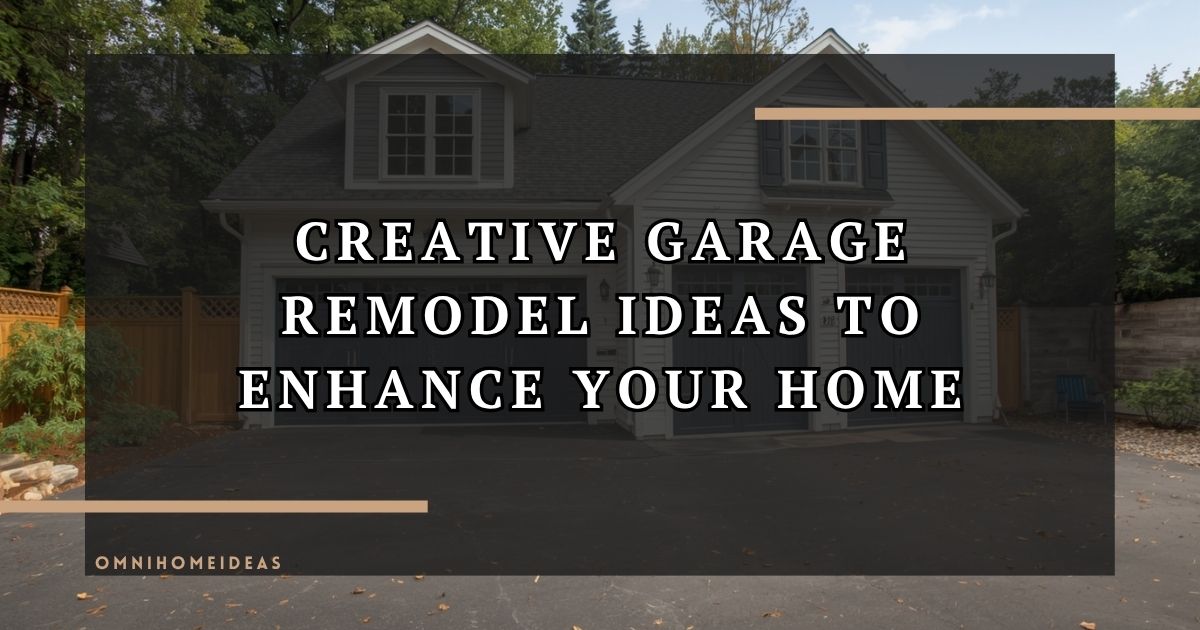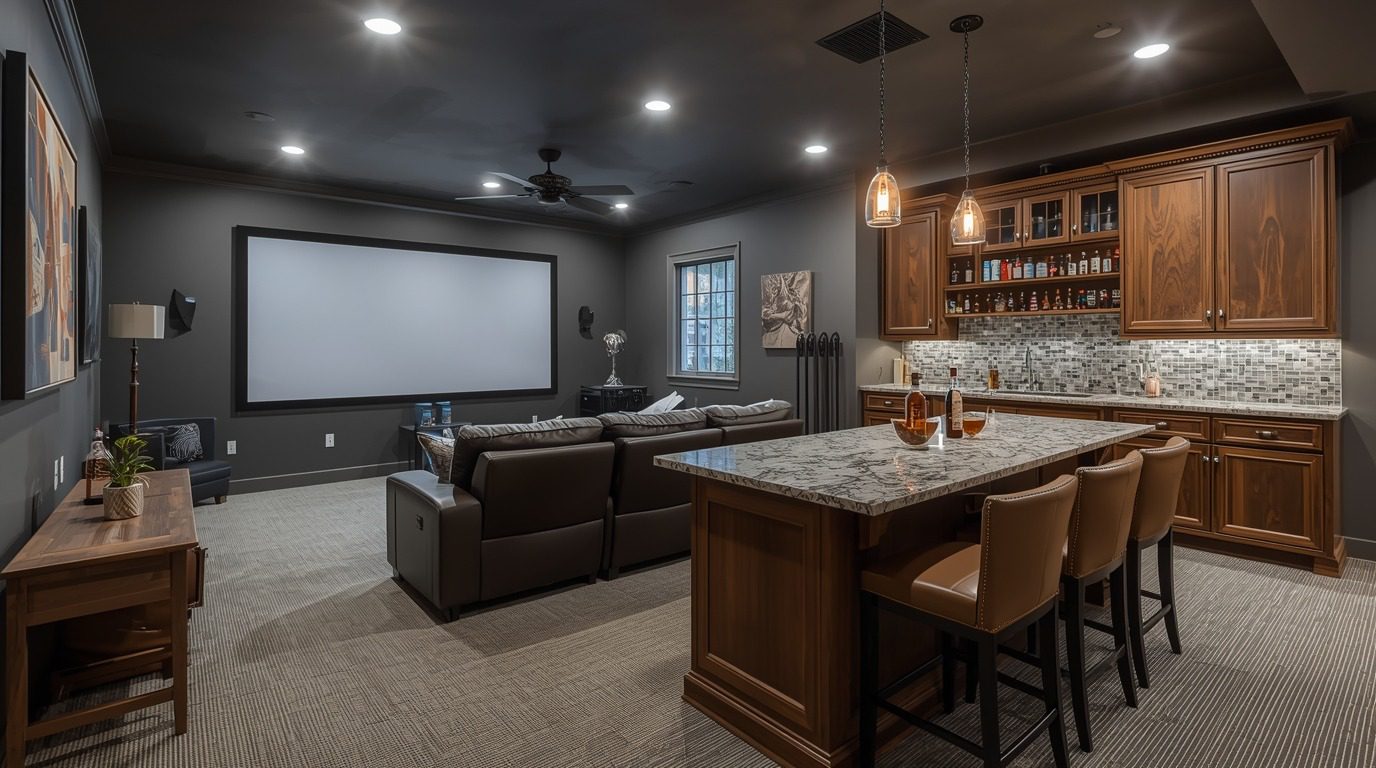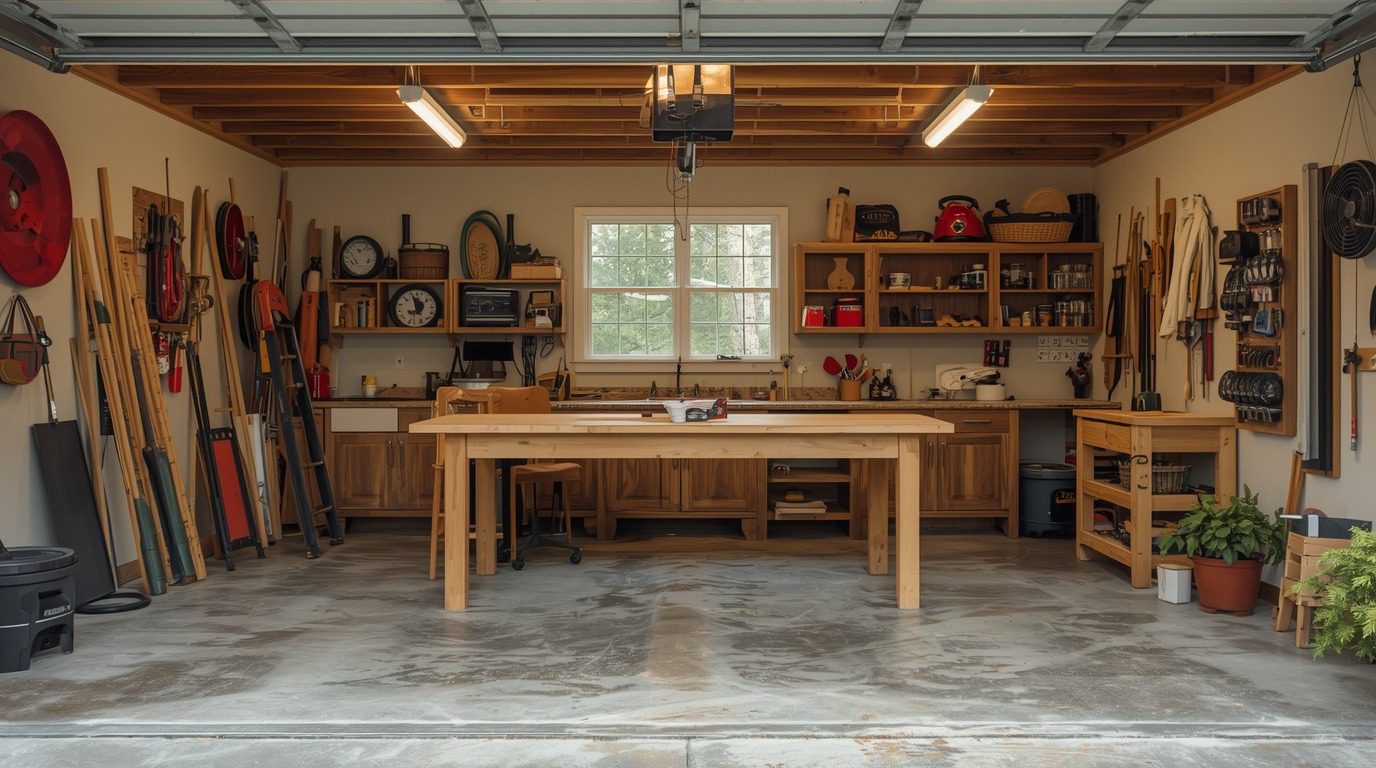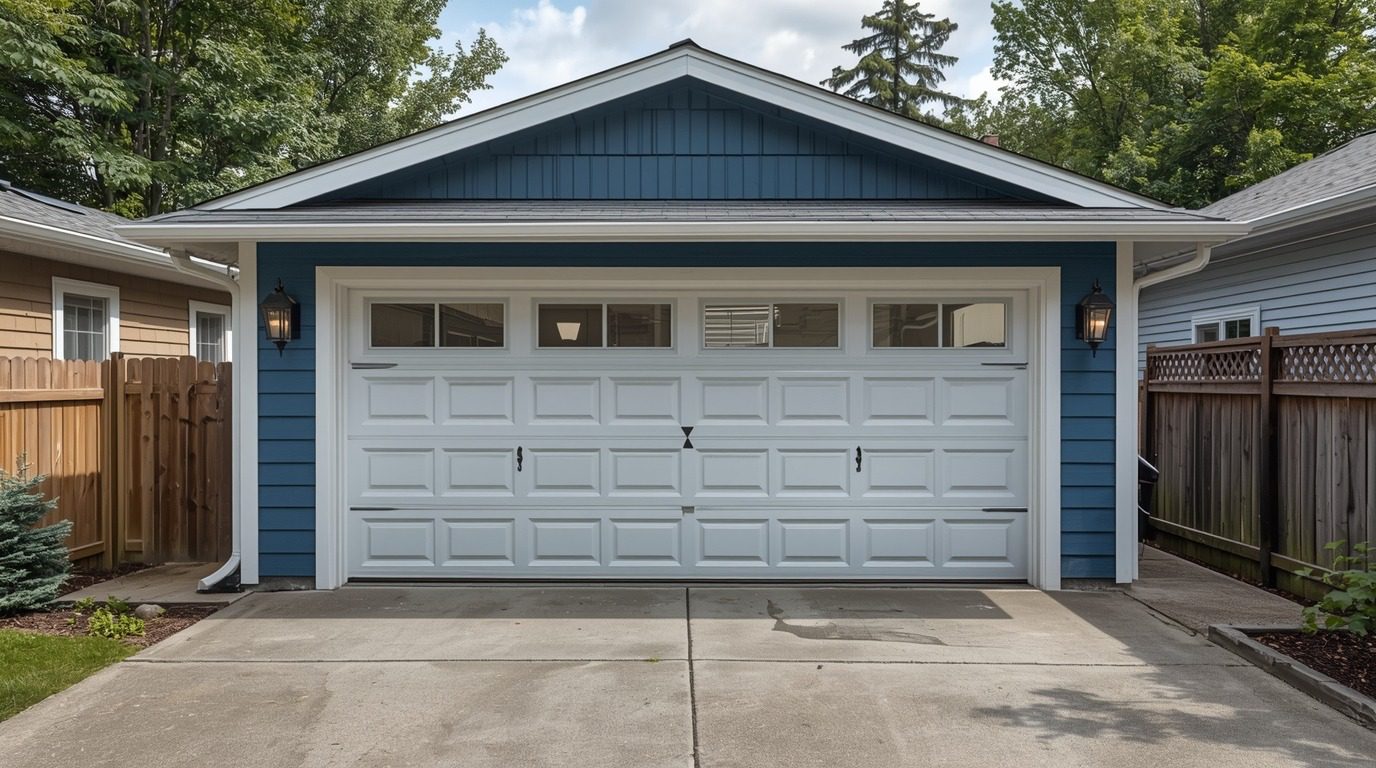A garage can be more than just a place to park your car. Since you already have a driveway, the garage becomes a largely unused space full of untapped potential. You can consider the garage an extra room and spruce it up.

Garage Remodeling Ideas
There are plenty of ways to remodel your garage. When choosing what to shape it into, keep you and your family’s needs in mind. Below are three creative ideas to get started.
1. Entertainment Room

Some people use their living room for all forms of entertainment, such as gaming, movie watching and board games. Incorporating an entertainment room into your garage can clear up some clutter in your living room and create a separate space for all those fun activities.
A home theater is a nice option because it gives you and your friends and family a fun place to watch movies. Invest in a nice, long couch or recliners. Get a big television screen or a projector to mimic a real movie theater. Light dimmers can make the picture pop. You could even add a popcorn machine.
A bar is another fun option for remodeling your garage. If you want a separate place to store your alcohol and relax with a cold drink, a bar is the way to go. Consider installing a marble countertop with wooden cabinets and matching stools to give the feel of a real bar. Having a home bar could become the defining feature of your home that guests go home talking about.
If you have children whose toys take up over half of your shared spaces, consider turning your garage into a playroom. Garage interiors are often painted gray or white, so repaint them with bright colors to make the playroom pop. You could buy a tabletop train set or a slide to give your kids more toys to enjoy in the new larger space.
2. Hands-On Room

If you enjoy getting your hands dirty and creating, consider turning your garage into a place for more hands-on activities. Turn the garage into a woodshop or workshop. With the extra space, you could purchase bigger machines than only a chainsaw or a hammer to take on more complicated at-home projects.
If you love art, a garage can be a great place to set up a studio. You can open the doors to reveal the outside world, which could provide great inspiration for a painting or charcoal piece. Paint fumes can also be toxic, so working in the garage can keep the smell away from your house and allow for better ventilation.
Home gyms are a common choice when remodeling a garage. The extra space allows fitness enthusiasts to install an elliptical or a weightlifting set. If you work out in the morning, it can be a good place to work out without disturbing any sleeping family members in your house.
An option few people think of is creating an indoor garden. Add raised plant beds and vines that hang from the ceilings. Be mindful of what plants you buy because the garage does not get as much light as an outside garden. It’s best to pick plants that thrive in shady environments.
3. Rental Room

The most lucrative of these options is turning your garage into a bedroom or apartment that can be rented. Of course, you could also make it a guest room for extended family or visiting friends, but if you want some monthly rent money and don’t mind having someone live in your house, then a rental room could be the right option for you.
If you’re turning your garage into a full apartment, make sure it has a bathroom and a small kitchen installed. Plumbing and electricity can be tricky installations without the help of professionals who can examine your home’s foundations and determine whether it’s even possible.
Since remote work is becoming more and more common, you could also turn your garage into a home office. If it’s for you, then there would be no rent coming in. However, if you live in an area with demand for it, you could rent the office space out to traveling remote workers for the day. This could get you money without having someone live on your property.
Tips for Your Remodeled Garage
No matter how you transform your garage, here are some tips to maintain comfort and safety in the space.
Insulate the Garage
Garages are often built to store a car, so cold air seeping in is not usually a factor. However, investing in proper insulation is key if you are building a room for people to spend extended amounts of time in.
Upgrade the Garage Door
A new garage door can withstand weather conditions and may come with advanced security features. Some homeowners see an 85% return on investment after replacing their garage doors, which is great news if you think you’ll sell your house one day.
Understand Your Skill Level
You may have ambitious ideas for your upgraded garage, but avoid taking on tasks that you can’t safely complete. Hire qualified contractors for HVAC, electrical, plumbing and other technical tasks. They have the knowledge and tools to complete projects. DIY-friendly tasks include painting walls and adding furniture.
Budget Wisely
The size of the garage and the extent of your remodel influence the remodel costs. The average garage remodel cost is $18,000 in the U.S., so create a reasonable budget and stick to it. Factor in a buffer for unexpected costs or repairs.
Get Creative With Your Garage Makeover
Remodeling your garage, especially if there’s excess clutter or storage in it right now, can feel daunting. However, having an extra room can be an exciting venture. Consider the extent of what you can do to remodel your garage and how you or your family could really benefit from an extra room. Get creative!

